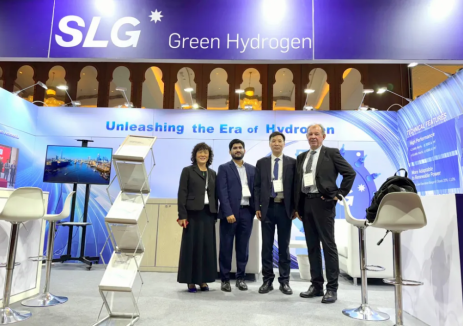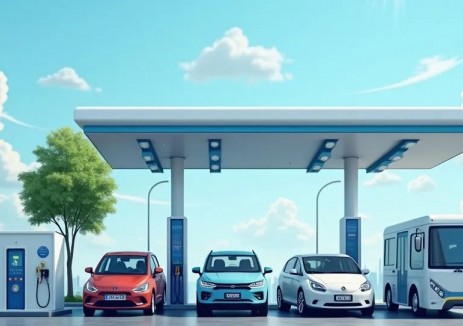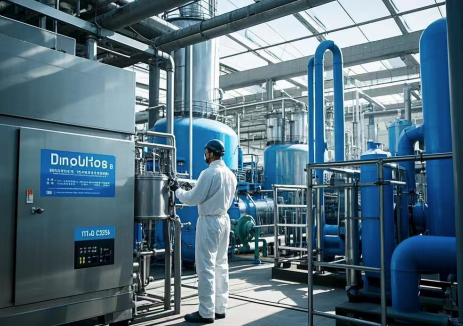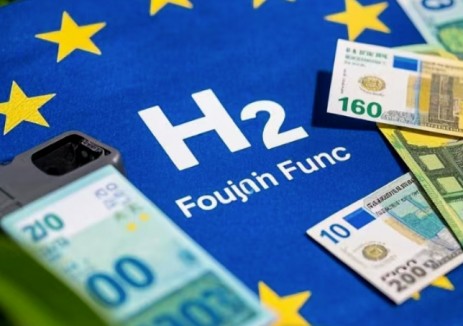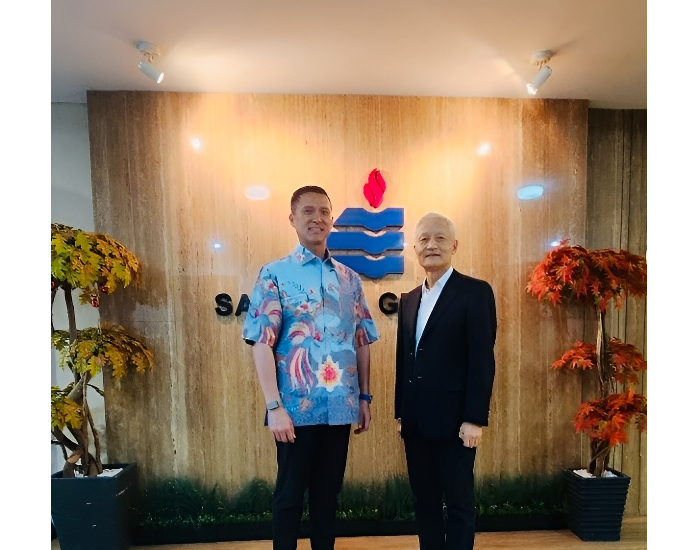新加坡国立大学(NUS)的研究人员近日意外发现了一种更节能的获取氢气的方法。
NUS研究团队发现,光可以在一种广泛用于水电解的催化材料中触发一种新的机制。
大约3年前,薛俊敏副教授的实验室的顶灯意外断电,使他们得以观察到一些全球科学界尚未成功做到的事情。
据11月6日报道,新加坡国立大学(NUS)研究人员的一次偶然的科学发现可能会彻底改变水分解释放氢气的方式。
NUS研究团队发现,光可以触发一种可以起催化作用的材料的新机制,这种催化材料广泛用于水电解,水被分解成氢气和氧气。其结果是一种更节能的获取氢气的方法。
NUS研究团队日前在《自然》杂志上发表的一篇研究论文中详细介绍了他们的意外发现。
由新加坡国立大学设计与工程学院(NUS CDE)材料科学与工程系薛俊敏副教授、王晓鹏博士和Vincent Lee Wee Siang博士领导的研究团队发现,光可以在一种广泛用于水电解的催化材料中触发一种新的机制。
参与发现的还有A*STAR高性能计算研究所余志根博士以及新加坡国立大学工程研究中心机械工程系王浩博士。薛副教授说:“我们发现,电催化反应的氧化还原中心在金属和氧气之间切换,由光触发, 这大大提高了水电解效率。”
薛俊敏副教授和他的研究团队的突破性发现可以提高氢气作为清洁能源的可负担性。这项新发现可能会开辟新的、更有效的生产氢气的工业方法,并将这种环保的燃料来源提供给更多的人和行业。
意外的突破
在正常情况下,薛副教授和他的研究团队可能无法获得如此突破性的发现。但大约3年前,他实验室的顶灯意外断电,使他们得以观察到全球科学界尚未成功做到的事情。
那时,薛副教授研究室的顶灯通常24小时都是开着的。2019年的一个晚上,由于停电,顶灯熄灭了。当研究人员第二天返回实验室时,他们发现在黑暗中继续进行的水电解实验中,氧化氢氧镍基材料的性能急剧下降。
薛副教授指出:“以前没有人注意到这种性能下降,因为从来没有人在黑暗中做过实验。而且,文献上说这种材料不应该对光敏感;光不应该对它的性质有任何影响。”
电解水的电催化机理是一个很好的研究课题,镍基材料是一种很常见的催化材料。因此,为了证明他们即将发现一些突破性的东西,薛副教授和他的研究团队进行了大量重复的实验。他们深入研究了这种现象背后的机制。他们甚至在新加坡以外的地方重复了这个实验,以确保他们的发现是一致的。
现在,经过3年的研究,薛副教授和他的研究团队终于能够在一篇论文中公开分享他们的发现。
下一步计划
根据他们的发现,该研究团队现在正致力于设计一种新的方法来改进生产氢气的工业过程。薛副教授建议将含有水的电池制成透明的,这样就可以在水分解过程中引入光。
“这应该在电解过程中需要更少的能量,使用自然光应该更容易。可以在更短的时间内生产更多的氢气,消耗更少的能源。”薛副教授如是表示。
食品公司利用氢气将不饱和油脂转化为饱和油,这就是人造奶油和黄油。氢气也被用来焊接金属,因为它可以产生4000℃的高温。石油工业使用这种气体来去除石油中的硫含量。
氢气有可能被用作燃料。长期以来,氢燃料被吹捧为一种可持续燃料,它与氧气反应燃烧时不产生任何排放——不需要点火,使其成为一种更清洁、更环保的燃料来源。 一旦储存问题得到解决,氢电池可能比太阳能电池更可靠。
把入射的光作为催化剂的助推剂听起来像一个骗局。但3年的测试和实验似乎是合理的,而且是适当的。
原文如下:
Accidental Discovery May Optimize Hydrogen Production Process
· Researchers at the National University of Singapore have found a more energy-efficient method of obtaining hydrogen.
· The team found that light can trigger a new mechanism in a catalytic material used extensively in water electrolysis.
· An accidental power off tripping of the ceiling lights in his laboratory almost three years ago allowed them to observe something that the global scientific community has not yet managed to do.
A serendipitous scientific discovery by researchers at the National University of Singapore could potentially revolutionize the way water is broken down to release hydrogen gas.
The team found that light can trigger a new mechanism in a catalytic material used extensively in water electrolysis, where water is broken down into hydrogen and oxygen. The result is a more energy-efficient method of obtaining hydrogen.
The team detailed their discovery in a research paper published in the scientific journal Nature.
The team, led by Associate Professor Xue Jun Min, Dr Wang Xiaopeng and Dr Vincent Lee Wee Siang from the Department of Materials Science and Engineering under the NUS College of Design and Engineering (NUS CDE), found that light can trigger a new mechanism in a catalytic material used extensively in water electrolysis.
This breakthrough was achieved in collaboration with Dr Xi Shibo from the Institute of Sustainability for Chemicals, Energy and Environment under the Agency for Science, Technology and Research (A*STAR); Dr Yu Zhigen from the Institute of High Performance Computing under A*STAR; and Dr Wang Hao from the Department of Mechanical Engineering under the NUS CDE.Assoc Prof Xue said, “We discovered that the redox center for electro-catalytic reaction is switched between metal and oxygen, triggered by light. This largely improves the water electrolysis efficiency.”
The groundbreaking discovery made by Assoc Prof Xue Jun Min (center) and his team could improve affordability of hydrogen as source of clean energy. Image Credit: National University of Singapore.
The new finding can potentially open up new and more effective industrial methods of producing hydrogen and putting this environmentally friendly source of fuel within the reach of more people and industries.
The accidental breakthrough
Under normal circumstances, Assoc Prof Xue and his team may not have been able to come across such a groundbreaking discovery. But an accidental power off tripping of the ceiling lights in his laboratory almost three years ago allowed them to observe something that the global scientific community has not yet managed to do.
Back then, the ceiling lights in Assoc Prof Xue’s research lab were usually turned on all 24 hours a day. One night in 2019, the lights went off due to a power off trip. When the researchers returned the next day, they found that the performance of a nickel oxyhydroxide-based material in the water electrolysis experiment, which had continued in the dark, had fallen drastically.
Assoc Prof Xue noted, “This drop in performance, nobody has ever noticed it before, because no one has ever done the experiment in the dark. Also, the literature says that such a material shouldn’t be sensitive to light; light should not have any effect on its properties.”
The electro-catalytic mechanism in water electrolysis is a very well researched topic, and the nickel-based material is a very common catalytic material. Hence, in order to establish that they were on the verge of discovering something groundbreaking, Assoc Prof Xue and his team embarked on numerous repeated experiments. They dug deeper into the mechanics behind such a phenomenon. They even repeated the experiment outside of Singapore to ensure that their findings were consistent.
Now three years into the research Assoc Prof Xue and his team were finally able to share their findings publicly in a paper.
Next steps
With their findings, the team is now working on designing a new way to improve industrial processes to generate hydrogen. Assoc Prof Xue is suggesting making the cells containing water to be transparent, so as to introduce light into the water splitting process.
“This should require less energy in the electrolysis process, and it should be much easier using natural light. More hydrogen can be produced in a shorter amount of time, with less energy consumed,” said Assoc Prof Xue.
Food companies use hydrogen gas to turn unsaturated oils and fats into saturated ones, which give us margarine and butter. Hydrogen is also used to weld metals together, as it can generate a high temperature of 4,000° C. The petroleum industry uses the gas to remove the sulfur content from oil.
Hydrogen can potentially be used as a fuel. Long-touted as a sustainable fuel, hydrogen fuel produces no emissions as it burns upon reacting with oxygen – no ignition is needed, making it a cleaner and greener fuel source. once the storage issues are worked out hydrogen could be more reliable than solar-powered batteries.
Considering incoming light as an accelerant to a catalyst sounds like a fake. But three years of testing and experimentation seems justified and was duly undertaken.


